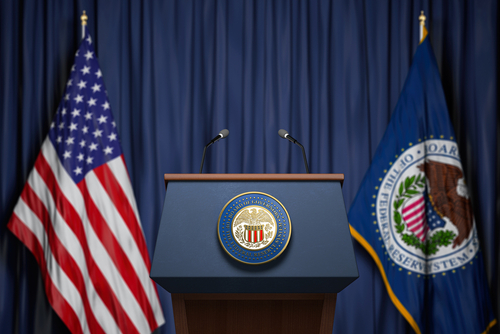
Monetary Policy & Inflation | US

Monetary Policy & Inflation | US
This article is only available to Macro Hive subscribers. Sign-up to receive world-class macro analysis with a daily curated newsletter, podcast, original content from award-winning researchers, cross market strategy, equity insights, trade ideas, crypto flow frameworks, academic paper summaries, explanation and analysis of market-moving events, community investor chat room, and more.
Since the GFC, the Fed has assumed lowering inflation is easier than raising it. But raging price rises, with CPI at 9.1%, are prompting a few raised hands.
The question so far has been this: is the Fed willing to tighten policy enough to stabilize inflation? But no one seems to be asking whether they are able to tighten it… Everyone is taking it for granted. After all, Chair Jerome Powell said it was ‘likely to be relatively simple.’ Who would challenge that?
Yet as it nears restrictive territory, the Fed will probably struggle much more than expected to effectively tighten policy.
This may sound counterintuitive. How can a central bank be unable to tighten policy? Yet few realize the Fed’s current operating framework – based on abundant reserves – is largely untested, especially amid runaway inflation.
Like anyone else, the Fed receives interest on its assets and pays interest on its liabilities. As the Fed hikes the federal funds rate (FFR), however, it will have to pay higher interest on its liabilities (on reserves, RRP, and TGA). Meanwhile, the interest rate it receives on its assets (its securities portfolio) will change little. This means its net income from interest rates will fall.
I think the Fed will keep hiking interest rates aggressively – ultimately to 8% by end-2023. This is far higher than the predictions in the Fed’s June Summary of Economic Projections (Chart 1).

Alongside some other key assumptions (Appendix), we can model just how much hot water this hiking will land the Fed in through 2022-3.
Under my scenario, the Fed’s net interest income would turn negative this month (Chart 2). For the whole of 2022, it would fall to $33bn from $123bn in 2021. In 2023, net interest income would become minus $230bn, and interest payments on reserves, RRP and TGA would represent $357bn.
With the Fed’s capital currently representing $41.7bn or 0.5% of total assets, policy tightening would effectively wipe out Fed equity in 2023. Put another way, the Fed will go broke.

I ran an alternative scenario assuming the interest rate trajectory shown in the June SEP. This is interest rates up to 3.25-3.50% in 2022 and 3.75-4.00% in 2023.
Even under this scenario, the Fed’s interest income would fall to negative $83bn in 2023, i.e., still wipe out Fed equity.
The Fed could reduce how much interest it pays by more quickly reducing the size of its balance sheet (quantitative tightening). For various reasons, this would likely require outright sales of its securities portfolio.
But outright sales could entail substantial capital losses as yields are now higher than during most of the post-GFC era of quantitative easing. With the Fed’s capital representing about 0.5% of its securities portfolio, outright sales would very quickly wipe out the Fed’s equity.
Operational losses could have serious consequences for Fed policy. First, the payments of hundreds of billions to banks and money market funds is likely to prove politically contentious.
With populism on the rise, politicians on both sides of the aisle could argue that the Fed’s interest payments are regressive and inefficient.
Second, if the Fed booked a loss, it would have no profits to remit to the Treasury. Since 2010, it has given about $80bn a year to the Treasury (up from $30bn pre-GFC). This represents about 25% of the Treasury non-tax revenues. This could worsen the relationship between the Fed and Congress, which is already tense as several GOP politicians think the Fed has gone ‘woke’ at the expense of its inflation stabilization mandate.
Third, running into the red could make the market see the Fed as fragile and dependent on the Treasury. That could undermine its credibility, especially in fighting inflation.
Concerns over operational losses could see the Fed fall further behind on hiking, leading to yield curve inversion. Though this could lead to higher growth and inflation in the short term, markets would likely look through these and anticipate greater eventual tightening and recession.
Key assumptions are:
Spring sale - Prime Membership only £3 for 3 months! Get trade ideas and macro insights now
Your subscription has been successfully canceled.
Discount Applied - Your subscription has now updated with Coupon and from next payment Discount will be applied.